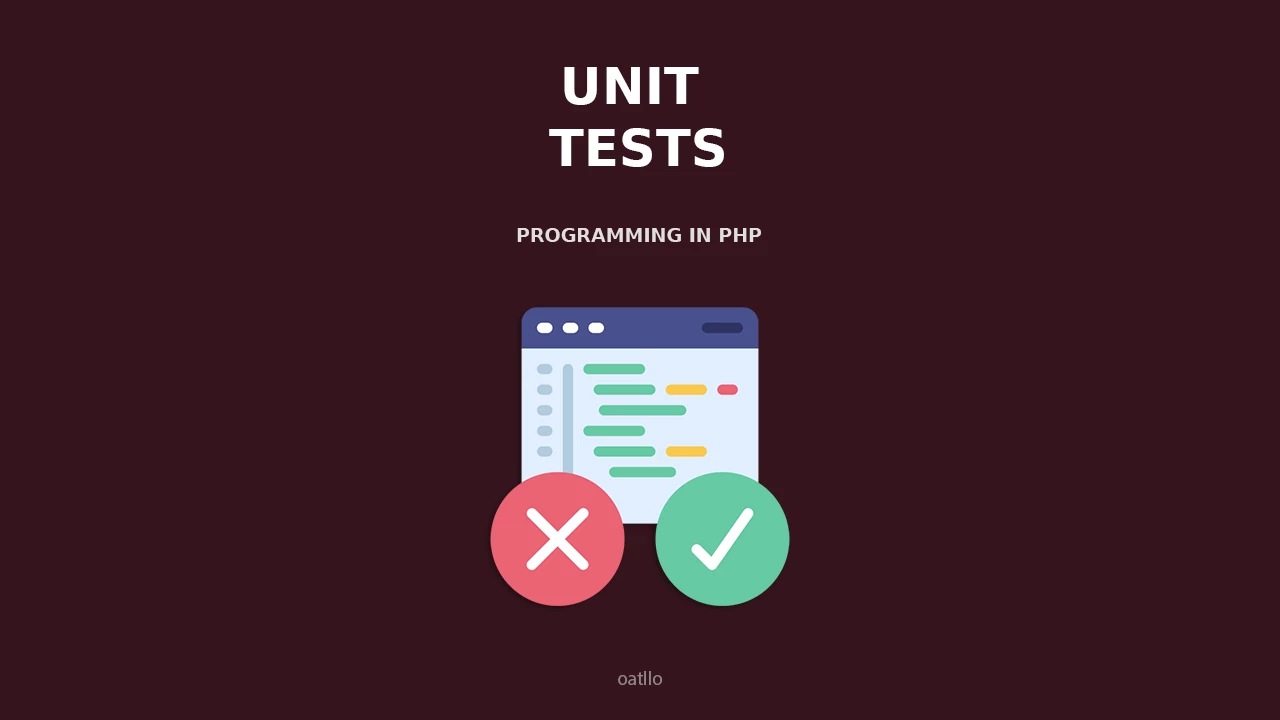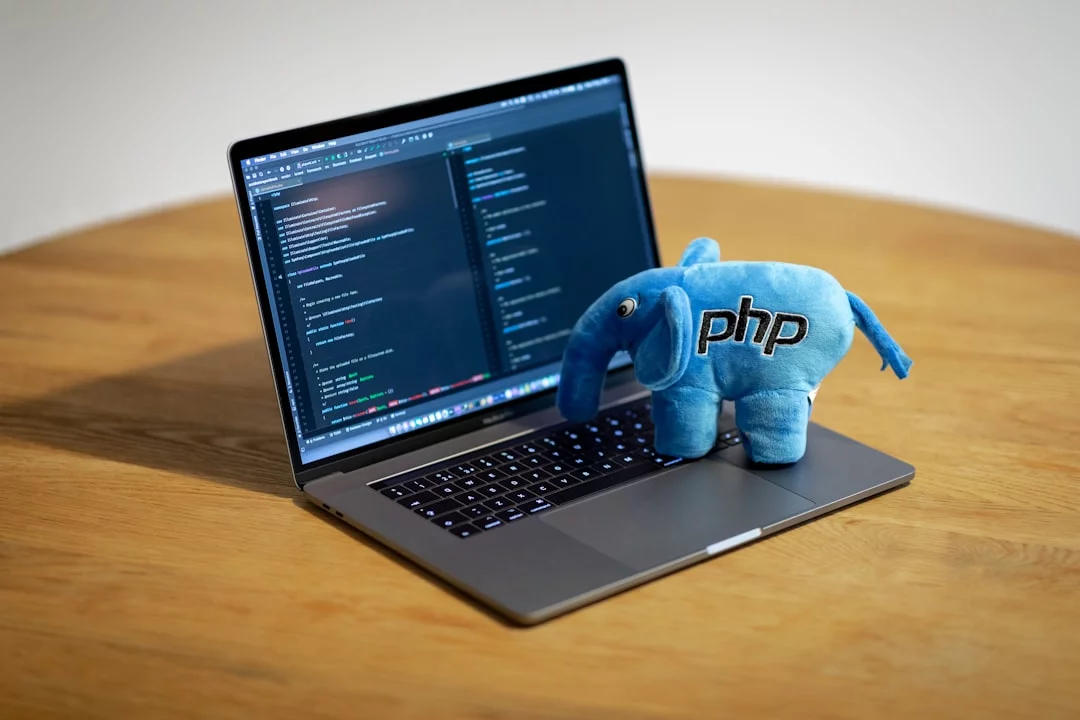Introduction to Unit Testing
Unit testing, hmm... sounds a bit... technical, right? But don't worry, we will soon discover what this concept entails and why it is so important in the world of programming, especially in PHP. Imagine that each of your applications is a house - and unit tests are the foundations. Without solid foundations, any additions will be shaky and eventually collapse. And no one wants to be the one collecting dust when their code crumbles in the face of unexpected changes.
In the simplest terms, unit tests are tests that focus on the smallest parts of your code - called units. You ask, what does that mean? A unit could be, for example, a function or a class. With these tests, you can check if a given unit works correctly in isolation, which significantly contributes to ensuring the stability of your program. This can be compared to testing a car's engine before you embark on a long trip - it's better to find out something is wrong before you get behind the wheel.
One of the most popular tools for conducting unit tests in PHP is PHPUnit. It's nothing more than a professional assistant that not only makes the testing process easier but also makes it significantly more efficient.
Why? First, unit tests allow you to increase your confidence when making changes to the code. Every change is like mowing the lawn - if you're not sure you won't damage any decorative plants, you'll be afraid to step onto that lawn. However, when you have tests, you can feel at ease because you have tools that will show you where the problem may lie.
The advantage of using unit tests is also that they facilitate the approach to refactoring. Yes, that kind of black magic you sometimes have to practice as a programmer.
Want to make changes to the code to make it more efficient or readable? Go ahead! With the right unit tests, you can be sure that you won't break anything during the process.
So, can we summarize the role of unit tests? They are the key to resilient, reliable code that won't let you down when you need it most. Moreover, they increase the efficiency of development teams as they allow for easier changes and fixes.
Doesn't that sound like paradise for every programmer? Introducing them into programming practice is like installing air conditioning on a hot day - no one can take that away from you!
Why PHPUnit?
Have you ever wondered why PHPUnit has become the king among testing tools in PHP? It's a bit like choosing a car – you may have many options on the market, but there's one model that impresses you the most, right? PHPUnit is a tool that attracts developers with its simplicity, functionality, and, most importantly, constant evolution in response to developers' needs. Let's take a deeper look at what truly makes PHPUnit so popular.
While other unit testing frameworks also have their strengths, PHPUnit stands out among its rivals. Its most distinctive features are:
- ease of use
- rich documentation
- plugin ecosystem
Moreover, PHPUnit not only makes it easier to write tests but also to manage and run them. It's like having a supervisor who reminds you of your duties, but fortunately, doesn't yell when something distracts you!
When comparing PHPUnit to other tools, you must consider their functionality and adaptability to your project's needs. For example, tools like Codeception offer a more complex architecture for acceptance tests, but their configuration can be like putting together a puzzle without a picture on the box. Sometimes you might get lost! PHPUnit, on the other hand, provides you with a clear and intuitive structure, making tests cleaner and more readable.
One of the most important reasons why developers choose PHPUnit is its integration with popular CI/CD tools like Jenkins and Travis CI. Testing your code has now become part of the daily ritual, like sharing coffee in the office. This allows you to catch errors quicker and maintain the quality of your software. The structure of the code may be chaotic, but with PHPUnit, it's easier than warming up a cold plate in the microwave.
Do you think you need to know all the secrets of PHPUnit to get started? Nothing could be further from the truth! Its main advantage is accessibility and the number of educational resources available. It's like having a library full of the best cooking books at your disposal when learning to prepare a complex dish. Don't be afraid to experiment and explore different features, because in no time you will become a master at creating unit tests.
You might think that writing unit tests is boring, but it's like building your favorite LEGO set – following the steps leads to satisfying results. PHP and PHPUnit create the perfect combination that can help you reduce errors, increase code clarity, and provide relief in the landscape of programming. Simply put, this tool is like the best friend at work: it will always understand your needs and help you overcome any challenges related to software development.
In summary, PHPUnit is a tool that will do everything it can to assist you with unit testing. Thanks to its intuitive structure, integration with other tools, and rich documentation, you have everything you need to start your adventure with writing unit tests.
If you are already ready for a little journey through the world of unit testing in PHP, that's great! However, before we get to the heart of the matter, we need to stop at a stage that many people treat as a formality but is extremely important. We're talking about installing PHPUnit. After all, a good cooking school starts with the right tools and ingredients. So, how do you install PHPUnit to take advantage of its powerful capabilities?
First, we have one of the most popular methods at our disposal, namely Composer. This dependency management tool in PHP not only simplifies the installation of libraries but also makes the whole process much more organized. If you don't have Composer yet, you need to install it quickly. The whole procedure is as simple as pie. Just download it from the official website and then run the following magical script:
# Run this in your terminal to download Composer
curl -sS https://getcomposer.org/installer | php
Once Composer is installed, we can proceed to install PHPUnit. After all, creating the perfect dish requires that the previous ingredients are already ready! In our case, we execute the following command:
# Install PHPUnit globally
composer global require phpunit/phpunit
Now that PHPUnit is installed, it's also worth ensuring that it is added to the system path so you can invoke it from anywhere in the terminal. How to do it? It depends on your operating system:
- Unix users (e.g., Linux or macOS): Just add the following line to your shell configuration file (e.g., ~/.bashrc or ~/.zshrc):
# Add Composer's vendor binaries to the PATH
export PATH="$PATH:$HOME/.composer/vendor/bin"
- Windows users: You need to add the appropriate path to the environment variables. How to do it? Download some online guide, and a few clicks will make PHPUnit available everywhere!
However, what if you want to use the manual installation method? You can download the .phar file from the official PHPUnit website and then run it using PHP. This is very handy as you don’t have to use Composer every time. Below you will find the appropriate command:
# Download the PHPUnit .phar file
wget https://phar.phpunit.de/phpunit.phar
# Make it executable
chmod +x phpunit.phar
# Move it to a global location
sudo mv phpunit.phar /usr/local/bin/phpunit
It's a pleasant breeze in espresso! After this step, you can run PHPUnit by simply typing phpunit in the terminal. Simple, right? Remember, it’s always good to check after installation if everything went according to plan. To do this, use the command:
# Check PHPUnit version to ensure proper installation
phpunit --version
If the appropriate version appears, it means everything went well, and you are ready to start writing your first unit tests. Remember that testing is not just good coding style but also the key to success in the long run. With PHPUnit, you can really get to know your code as a friend or foe, all thanks to a well-prepared environment. So, what's next? Is our code ready, or do we still have to work on it a bit more?
In the world of programming, especially when we talk about testing, we encounter several terms that are crucial for understanding how PHPUnit works. Imagine each of these terms as a piece of a puzzle, and only when they all fit together can we get the complete picture burning onto our computer screen. We will start with tests, which is like the wrapping of a present — it is the process of checking whether our blocks of code work as they should. From this simple definition, it follows that tests are the teacher telling us whether our work, the code, meets expectations. Only when we get a green light from the tests can we hand it over to users who will use it.
However, testing is more than just checking correctness. Here we enter the world of assertions. These little declarations are like gatekeepers, setting conditions that must be met. Assertions in PHPUnit allow us to precisely define what should happen during tests. For example, if we are testing an addition function, we might use assertions to ensure that adding 2 and 2 always gives 4. If the assertion doesn't match, we treat it like an alarm at night. We then need to examine the issue more closely and understand what went wrong.
Organization of tests and the concept of "suite"
When we start thinking about organizing our tests, the concept of suite comes before us. It can be compared to a collection of stamps from different countries — they come together to create something bigger, the ability to test a larger portion of code in one run. A suite is a group of tests that are run together, for example, to ensure that different components of the system interact with each other as we expect. Testers can create suites to test various functionalities, saving time and making organization easier. The more we manage, the fewer surprises await us at the end.
The role of mocks in testing
Finally, we cannot forget about mocks. They are a bit like toys in an isolation zone, which we borrow from the store. We want to check how our system interacts with external elements, so we create mocks to simulate these interactions without using real resources. Mocks allow us to test behaviors and check whether our application responds correctly to various scenarios that may occur in the real world. With them, we can test what happens if an external service returns an error or if something goes wrong. It's like preparing for a storm when we check the weather forecast before going out — we prefer to be ready for anything.
Summary
All these elements – tests, assertions, suite, and mocks – create a harmoniously functioning mechanism. When you combine them all together, you gain confidence that your code is not only functioning but also ready to face the responsible world of production. The dynamic duo of tests and assertions leads us into a realm where perpetually up-to-date code stresses less and developers sleep more peacefully.
Writing Your First Unit Test
Getting to the point, you may be wondering how exactly to start your journey with writing unit tests in PHP? Don't worry, we have all been in the same situation when taking our first steps in the world of PHPUnit. It's like learning to ride a bike – at first, it's hard to keep your balance, but with each attempt, you grow more confident. Let's do this together!
First, you need to have PHPUnit installed. If you don't have it yet, you can use Composer to install it. Here’s how it looks:
composer require --dev phpunit/phpunit
After installing PHPUnit, you can create your first test class. Let's assume we want to test a simple class that adds two numbers. Our class will look like this:
// SimpleCalculator.php
class SimpleCalculator {
public function add($a, $b) {
return $a + $b;
}
}
Now, we'll create a test class to check if our add method works correctly. Here's how it will look:
// SimpleCalculatorTest.php
use PHPUnit\Framework\TestCase;
class SimpleCalculatorTest extends TestCase {
public function testAdd() {
$calculator = new SimpleCalculator();
// Using assertions to test the add method
$this->assertEquals(4, $calculator->add(2, 2));
$this->assertEquals(0, $calculator->add(-2, 2));
$this->assertEquals(-4, $calculator->add(-2, -2));
}
}
As you can see, the structure of our test is quite simple. Our test class inherits from TestCase, which gives us access to various assertion methods. In the case of the testAdd method, we create an instance of our calculator class and check whether the addition returns the values we expect. We use the assertEquals method to compare the expected result with the actual one.
We can say that writing unit tests is like shopping in a store – you always want to be sure that you get what you pay for. With assertions in PHPUnit, you have the assurance that every "deployment" of your code will work as you expect.
What’s next? Now it’s time to run our tests. You can do this in the terminal by using the command:
vendor/bin/phpunit SimpleCalculatorTest
After running the command, you should see that all tests have passed successfully. If you encounter any errors, don’t get discouraged – it’s part of the process. Writing unit tests is a skill that develops over time. Remember, every small step brings you closer to becoming a master in this field.
And so, with a little support from PHPUnit, you become a tester of your own code. Writing unit tests is not just a practice – it’s a way to ensure quality and avoid many potential problems in the future. After all, who would want to spend nights with an unfinished project, trying to fix bugs that would have been easy to catch just thanks to the tests?
Everything starts with advanced techniques that can elevate your unit testing skills to an expert level. Once you have mastered the basics of PHPUnit, it's time to dive into more complex aspects of testing that will truly open up new possibilities for you. Are you ready for a journey through the world of object mocking, exception testing, and creating custom assertions? It is precisely where previous techniques fall short that advanced methods become your best friends.
Object Mocking
Object mocking is a technique that allows you to create "fake" versions of objects that you can use in your tests. Imagine dealing with a class whose method depends on an external service, such as an API. Testing like this can be troublesome because you depend on the stability of that external source. This is where mocking comes to your aid. You create an object that simulates the behavior of the real service, but does not require you to send actual data or use external deployment. In PHP, with the help of PHPUnit, you can achieve this in just a few lines of code.
// Create a mock object for the service dependency
$mockService = $this->createMock(ServiceClass::class);
// Set up the expectation for the method
$mockService->expects($this->once())
->method('getData')
->willReturn('mocked data');
// Inject the mock into the object under test
$myClass = new MyClass($mockService);
$result = $myClass->useService();
// Test the result
$this->assertEquals('expected result based on mocked data', $result);
Isn't that great? Instead of worrying about what will happen if the API or external service goes down, you can focus on testing the logic in your code. Now that you have a solid foundation in mocking, it's time to look at exception testing. Sometimes a bug in the code isn’t just a minor oversight, but something that throws an exception. Unhandled exceptions can lead to significant issues in production code, and testing their behavior ensures that everything is functioning correctly.
Exception Testing
To test if a function actually throws an exception in a certain situation, you can use the following code. An example test to check if a method generates an exception when it receives an invalid value should be a must-have in your developer toolkit.
// Test to check if an exception is thrown
$this->expectException(InvalidArgumentException::class);
// Invoke the method that is expected to throw an exception
$myClass->methodThatShouldThrowException('invalid value');
You may worry that even your new code can cause exceptions and errors in certain circumstances. By testing exceptions, you can ensure that your application behaves as expected even in challenging situations.
Custom Assertions
Finally, we are left with the topic of custom assertions. What does this actually mean? The ability to create your own assertions in PHPUnit gives you the flexibility to avoid using standard assertion methods that may be insufficient in specific contexts. Imagine writing tests for complicated logic, where you need to check not just one condition, but also a series of interrelated facts.
// Create a custom assertion
public function assertFooIsBar($foo) {
$this->assertTrue($foo === 'bar', "Foo must be 'bar'");
}
With a custom assertion, you manage the behavior where you can precisely describe what should happen and when it shouldn't, as well as display an appropriate message that eases troubleshooting. This approach helps not only in managing the understanding of tests but also improves their readability.
Summary
In summary, advanced testing techniques in PHPUnit – mocking, exception testing, and custom assertions – are powerful tools that can significantly extract more from your tests than you ever thought possible. By entering this advanced world, you gain tools and techniques that not only enrich your development toolkit but also facilitate the maintenance and enhancement of your applications in the long run. Who wouldn’t want to be better prepared for the unpredictable situations that can arise during software development?
In today's programming world, where changes occur faster than ever, automation is becoming a key element of the software development process. Think of it like cleaning your house - it works best when you have the right tools for the job! In the context of PHP and PHPUnit, integrating unit tests with CI/CD systems like Jenkins or GitHub Actions may seem like a complex undertaking. But don't worry, you're in good hands, and we'll walk through this process step by step.
First of all, before you embark on this journey, make sure you have PHPUnit installed and understand the basic principles of independent unit testing. It's like building a foundation for a house - skipping this step risks the entire structure collapsing.
Once you have marked PHP symphonies with your tests, it's time to move on to integration with CI/CD. So what exactly does CI/CD mean?
CI (Continuous Integration) is a process where code changes are integrated into the main branch of the project, and every commit triggers a set of tests. CD (Continuous Delivery/Deployment) is the next step, ensuring that your software containers are always ready for release.
It looks pretty good already, right? Yes, but listen - here we have prepared a small guide on how to implement this integration using Jenkins and GitHub Actions. To get started, Jenkins – create a new project by going to the “New Item” tab and selecting “Freestyle project.” Then, in the “Source Code Management” section, select Git and enter the URL of your repository. Finally, add a new “Build Step” by choosing “Invoke PHPUnit” and provide the path to your tests.
Configuring Jenkins is relatively straightforward, and here’s the key step: set up a trigger to automatically run tests after each push to the repository. You can set this option in the “Build Triggers” tab. Once you do this, Jenkins will nod to every new change in your code, and you can be confident that everything works as it should. Just like tidying up the mess when guests arrive!
Moving on to GitHub Actions, we can easily add a configuration file to our application to open the doors to test automation. In the root directory of your repository, create a folder .github/workflows and add a YAML file, e.g., phpunit.yml. In this file, you will define all the steps that GitHub should take. For example, you will specify how to run PHPUnit and which environment to choose for testing.
Example:
name: PHPUnit Tests
on:
push:
branches:
- main
jobs:
phpunit:
runs-on: ubuntu-latest
steps:
- name: Checkout code
uses: actions/checkout@v2
- name: Set up PHP
uses: shivammathur/setup-php@v2
with:
php-version: '8.0'
coverage: none
- name: Install dependencies
run: composer install
- name: Run PHPUnit
run: vendor/bin/phpunit
See? You can run tests without any problems, and the results will be presented in the Actions tab of your repository. That's how it’s all structured.
When integrating PHPUnit with CI/CD systems, remember the importance of good error management. As the old saying goes: "There are no bad questions, only poor students.” This means even the smallest errors in your unit tests can lead to bigger problems in production. For this reason, testing is like fixing a bug before causing a major catastrophe. CI/CD systems not only help with automation but also give Content Managers insight into everything that happens with the code. One can't help but rise and shout: "What more could I want in today’s globalized programming world?"
When we enter the world of unit testing in PHP, we must not forget certain fundamental principles that will make our tests not only effective but also enjoyable to maintain. You know how it is - with tests, just like with cleaning your room, when it seems you've tidied up, and in a moment, there’s chaos again. The key to success lies in organization and a conscious approach to testing practices and techniques. Get ready, because here comes the list of best practices and tips that will help you write better unit tests, turning PHP programming into a pleasure.
Fundamentals of Testing
Let’s start from the foundation - readability of tests. If your tests are convoluted and hard to understand, it’s like trying to read a treasure map that instead of pointing the way, turns into chaotic lines and corners.
Keep tests simple, short, and to the point. Use understandable names for tests and name methods so it’s clear what exactly you’re testing. Styles should be consistent, which will also help in quickly spotting differences and failures.
Organization and Isolation of Tests
Moving on to organization of tests, remember that it's better to have small, modular sets of tests that cover different functions. Think of it like sock segregation - it’s always easier to find what you’re looking for when they're neatly arranged by patterns or colors. You can also take advantage of grouping tests in PHPUnit, which further facilitates management.
The crux of the whole process is isolation of tests. It's nice that you have functions that work, but what happens when you rely on external resources? It’s good to use mocks and stubs to emulate those resources. Imagine a mock as a little actor in your application playing the role of another class, providing data that may deviate in real-time.
Without isolation, you expose yourself to unpredictability - your tests may pass or fail, and the reason for that failure might have nothing to do with what you are trying to verify.
Refactoring and Automation
You must not forget about refactoring tests. As you develop your application, your tests can become outdated, just like a fashionable pair of pants from a few years ago. Regularly reviewing and adjusting tests to the changing requirements and features pays off. You optimize not only the results but also the readability, which in turn benefits the team’s work.
Additionally, remember to automate the running of tests. If you have to run each iteration manually, it's like trying to clean your room while wearily waiting for the next steps. Use CI/CD tools so that every time you deliver new code, all tests are executed.
Automation not only saves time but also allows you to detect issues earlier, ultimately leading to greater stability.
Monitoring and Avoiding Mistakes
It's also worth pointing out monitoring test results. Gather metrics, examine deviations, and analyze results. Why? Because by analyzing what works and what doesn’t, you become a more conscious programmer. Like in life, costly experiences and warnings teach us the most.
Ultimately, creating the right testing environment is essential so that it not only educates but also inspires.
We must also remember common mistakes to avoid. One of the most frequent is the improper use of assertions. Using too many different assertions in one test for an unclear purpose can lead to situations where you don’t know what exactly went wrong. Each test should be responsible for one thing.
If your test updates, restores, and checks, then that's too much… and you're sure to get into extra trouble.
Summary
In summary, unit tests in PHP are a powerful tool that, when used wisely, can contribute to a more organized and secure programming process. Keep it simple, organize, isolate, refactor, and automate – these principles are crucial.
But remember, every project is different, so adapt these tips to your specific needs. And remember, mistakes happen. The key is to minimize them and learn from them! After all, it’s part of the learning process and fosters your growth as a programmer.








